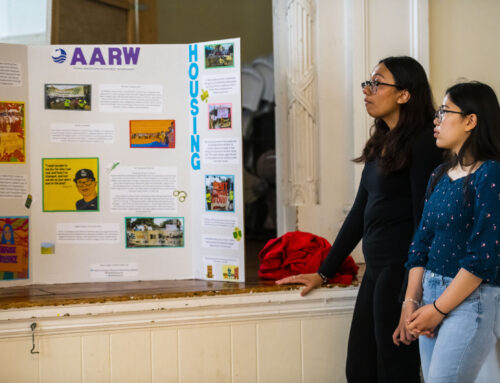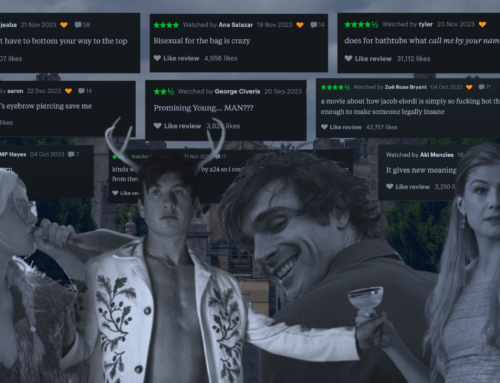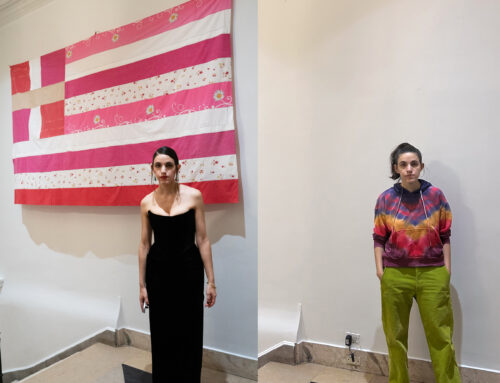
Tracy Chou is an experienced software engineer, having worked as an engineer and tech lead for Quora and Pinterest. But as a woman of color in technology working in Silicon Valley, she was part of a minority that is largely outnumbered by white men. In 2013, Tracy published a post on Medium titled “Where are the numbers?”, highlighting the disparity between what Tracy had experienced and what companies were admitting about how many female engineers they truly employed. Rather than admitting and trying to fix their issues with female representation and treatment of women in the workplace, many tech companies spend their time “hiding or muddling the data on women actually in engineering roles.” Following this post, Tracy created a repository to collect more accurate data on women in engineering, encouraging tech companies to be more transparent about their lack of diversity.
In 2016, Tracy co-founded a non-profit organization called Project Include, which “uses data and advocacy to help implement diversity and inclusion solutions in the tech industry.” The organization focuses on tech CEOs and leaders, helping them make diversity a priority in each decision they execute. Tracy also co-founded the non-profit #MovingForward, which focuses particularly on Venture Capital firms, helping them implement anti-harassment policies to ensure a more inclusive workspace.
Most recently, Tracy is the founding CEO of the Block Party app. As someone who is personally affected by harassment, Tracy wanted a way for people to be in control of what they see and experience online. Through her app, people are able to filter unwanted content on the Internet. In this interview, Keke was able to speak with Tracy to learn more about her experience as a woman of color in the tech industry and her work as a tech activist.
Keke: Tell us about yourself. What do you do?
Tracy Chou: I’m a software engineer, diversity advocate, and tech founder, currently working on a startup called Block Party.
K: What led you to become a software engineer? Can you talk about your journey in the tech industry?
TC: My path to becoming a software engineer was remarkably inadvertent. Despite the fact that both my parents are software engineers, and that I grew up right in the heart of Silicon Valley, I didn’t really know what the job actually entails, nor did I receive external encouragement to pursue it. The advice I got as a female engineering student at Stanford usually came in the form of recommendations to try non-technical roles, with the reasoning that I was more social than most engineers but had a technical background that would give me an advantage in working with them. Only when I was looking for my first full-time job out of school did companies push me to consider software engineering, out of self interest: They needed engineers, and there was more demand than supply (though let’s put an asterisk here because tech company hiring is notoriously flawed at identifying talent that doesn’t look like what they already know).
Once I started working as a software engineer, though, and actually came to understand what it meant to be one, I absolutely loved it. At the heart of it, engineering is about building things; software engineering is building digital things. Especially when I did take my first job, at the then-tiny startup Quora, I saw that we were creating something from scratch, something that wouldn’t exist if it weren’t for us — the handful of designers and engineers in the room writing code. And the beauty (and sometimes curse) of digital products is that, unfettered by physical constraints, they can scale in ways that were previously unimaginable. The great engineers who designed mosques, cathedrals, palaces — they built spaces that could fit thousands, tens or hundreds of thousands, at most a couple million. Today, Facebook has close to 2 billion daily active users.
After Quora, I joined another early startup, Pinterest, when there were only 10 people huddled over three rows of Ikea desks in a small office in Palo Alto. It was another exhilarating experience as a software engineer to get to help build and scale the product and company to the globally loved service that it is today. It was also during my time at Pinterest that I became much more known as a diversity activist. I was lucky to have the support of the company and to be able to use Pinterest as a platform to advocate for more industry-wide change.
K: Tell us about your work in advocating for better female representation in the tech industry. Was there a pivotal moment or experience that pushed you to be more vocal about this issue?
T: There wasn’t a single moment of epiphany or motivation. Rather, it felt like many waves of realization that had to wash over me repeatedly before it seeped in. Even from my earliest computer science courses in university and internships in the industry I had experiences that I know now are sexist or otherwise inappropriate, but back then I didn’t have the awareness or even vocabulary to identify behaviors like microaggressions, gaslighting, or sexual harassment. Part of the learning process was putting bits and pieces of my thinking online. Notably, as an early employee of Quora, I spent a fair amount of time writing answers and posts on Quora; I was fortunate to get feedback from others who could validate my experiences and add more perspective as well. It took me a long time to recognize that the otherness I had internalized as a personal issue was a systemic problem external to myself, but once I had that shift in perspective, it all made sense.
The piece of activism work that most people know me for is my push for diversity data transparency in the tech industry. In October of 2013, I wrote a Medium post titled “Where are the numbers?”, a call to action for the industry to come clean with its workforce data. Most major tech companies now publish annual diversity data reports that provide both a benchmark and a view onto what progress has or hasn’t been made. Since then, I’ve also joined forces with some incredible and fierce advocates to continue this activism work in a more coordinated fashion. In 2016, I co-founded the non-profit Project Include to focus on diversity and inclusion solutions for tech startups; in 2018, I co-founded the non-profit # MovingForward to increase transparency and accountability of venture capital firms around diversity and inclusion.
K: What does it feel like to be a woman in the tech industry? Can you tell us about some of your experiences and what you learned from them?
TC: It’s tough.
I’m a solo female founder, working on a problem that most of the gatekeepers of capital and power neither understand nor empathize with. I’m an activist trying my utmost to dismantle those systems of bias and privilege that have elevated them and kept them floating in those roles. As a competent and experienced software engineer in my own right, I also threaten some people’s notions of what a woman in tech might be capable of. Anticipating the reply guys who’ll come along to tell me it’s unbecoming of me to be sure of my worth, I will not enumerate all the ways in which I am outrageously better than most of my peers and yet still am treated with far less respect or even outright disrespect.
I have been sexually harassed during fundraising. I have had different investors inquire about my age and relationship status and tell me about their first time having sex. In rooms full of men, I have been completely ignored and talked over, despite being the expert in the room. Although Twitter is the water cooler of the tech industry, on that platform being a woman of color with an opinion and a minor following means I deal with harassment every day, some drive-by, some extremely targeted and persistent, spanning 6+ years by this point. I get racism, misogyny, sexually explicit threats, links to Asian porn, incoherent and disturbing professions of love, conspiracy theories involving me and a former FBI director, all sorts of anonymous heroes just letting me know that I’m off-putting to men and I would be more attractive and dateable if I weren’t so angry. I have been stalked in real life and then gaslit by law enforcement and private security firms trying to make me feel like I’m self-obsessed.
Over and over I’ve had men who purport to be advocates of diversity & inclusion try to take advantage of me and my company, costing me months of invaluable time, attention, and energy, not to mention so many tens of thousands of dollars in legal fees, billed by the 6 minute increment. One, I discovered later, has a pattern of using his position of fame and wealth to prey on female founders, I suppose because we are more vulnerable. A potential co-founder, after negotiating vigorously for special terms that I almost acceded to, accidentally emailed me his diary full of unflattering and coded sexist thoughts about me, wondering if I would be able to step up to the role of CEO. Another job candidate sent repeated emails after a bombed interview and subsequent rejection berating me for making a huge mistake and not seeing that he would be a huge asset to the team and telling me I was a bad interviewer anyways.
The great irony is that everything I’m trying to do directly addresses the adversity I’ve had to face and stare down. The tech industry’s dearth of diversity, ethics, and accountability has led us to a place where our real and digital worlds are rife with harassment, and disproportionately women, minorities, and other marginalized groups bear the brunt of it. I started my company not only to give people a safer experience online, to empower them and protect them from bullying and abuse, but also to attempt another existence proof for a company run by a woman, with a diverse team, that prioritizes the well-being of our users.
The people who care most deeply for me ask me if it’s worth it to put myself through all of the pain, suffering, and stress. But how could I not? I’m one of the few that even has the privilege to try. I am immensely lucky to be able to do what I do. And my crucible of experiences makes me uniquely suited and determined to solve the problems I’m trying to solve.

K: Can you introduce us to your app Block Party? What is the story and mission behind this app?
TC: The mission of Block Party is to give people control of their online experience and thus to be able to participate fully and safely in civic life online, free of harassment or unwanted experiences. Disproportionately it is women and minorities and other marginalized groups that are subject to the kind of abuse and harassment that forces them to self-silence or censor themselves, or to entirely disengage from online platforms. But the loss isn’t just individual, for these people; all of us lose when their voices are taken away.
I came to be working on Block Party because not only do I personally experience the problem of online harassment and desperately want to solve it, I’ve worked on the platform side and know what it takes to design and build solutions for it. Coincidentally enough, another thread of my career that comes in here is that of diversity and inclusion. A big part of why so many tech platforms have enabled abuse to proliferate is that they lack the representation and perspective on their teams to understand the vectors for abuse. Simultaneously, the reason I get abuse is that I speak on issues of diversity and inclusion.
K: What are the actions that need to be taken to increase female participation and equality in STEM?
TC: There is work to be done at all levels to increase the diversity of participation in STEM: in the educational system, to make STEM interesting and accessible; in culture and media, to change people’s perceptions of what STEM really is and who can do it; in the workplace, to give everyone equal opportunity to participate and succeed; in the home, to address historical inequalities that inhibit women from reaching their career potential. Some of these actions can be taken by individuals, others need to be taken by leaders and in coalition, and some may need to be pushed via policy and legislation.
K: Have you seen improvement in female representation in STEM? What are areas that still need to be changed?
TC: Within the tech industry, there’s been marginal improvement in female representation across the workplace and in leadership, but unfortunately that’s often come with a backslide in racial diversity. A very fundamental flaw with the approach that many have taken towards diversity is focusing solely on gender, as if merely adding a handful more white women will solve all our problems. True change will have to be fully inclusive and intersectional and consider the many different dimensions of people’s identity and background and experience, and we need to dismantle systems of exclusion rather than invite a few more people inside the velvet rope.
K: What advice would you give young girls and women who are hoping to enter the technology industry?
TC: In my journey, the biggest hurdles have been difficult, unwelcoming work environments and having to prove myself over and over yet often not getting the same kinds of opportunities or recognition as peers who were as or less qualified or accomplished, and the mental struggles to reconcile what I was experiencing with individual and institutional proclamations of meritocracy. I would want people entering the field to know that as much as people are talking about issues of diversity and inclusion in the workplace, there is still a large gap between what is said and what is done, and not only is the bias and discrimination very real, but also the gaslighting, when you’re made to feel crazy for sensing that something is wrong. At the same time, it is also possible to find good workplaces and good teams, and it is entirely reasonable to leave a toxic environment in search of something better.
Connect with Tracy on her website and Twitter.




